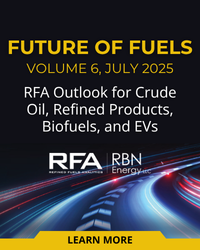The U.S. and its European allies have been working on ways to move away from Russian energy supplies after Russia’s invasion of Ukraine, with increased LNG exports to Europe expected to play an important role in that transition. And with global demand for LNG at an all-time high, it has put some important U.S. export projects closer to reaching a final investment decision (FID). But even with U.S. LNG production surging, questions remain about how much more LNG Europe can realistically handle. Warning — today’s RBN blog is an advertorial in which we discuss the highlights from our new Drill Down Report on the global LNG market.
The fallout from Russia’s full-scale invasion of Ukraine has been immense, with the human tragedy front and center. The effects have also reverberated across world economies as governments moved quickly to impose sanctions against Russia and corporations cut their ties with it. In a bid to minimize the impact on energy supplies and prices, the U.S. and Europe have been grappling with how best to wean themselves from Russian crude oil and natural gas. That was relatively easy for the U.S. — the ban on Russian oil imports announced in March by President Biden is likely to have only minor side effects. But the challenges for Europe are far greater due to its dependence on Russian supplies, especially natural gas.
In concert with the U.S., the UK followed with its own plan to ban imports of oil and refined products from Russia, but using a more phased approach, with the goal to stop them by the end of 2022, given its heavier dependence on Russian oil. The UK plan does not include natural gas or LNG, although it is less dependent on Russian gas than Europe as a whole, as can be seen in the recent separation between prices at UK benchmark National Balancing Point (NBP) and the European Dutch Title Transfer Facility (TTF; see You’re The Best Around). The European Commission (EC), which represents the 27 countries in the European Union (EU), announced plans to reduce natural gas imports from Russia by two-thirds by the end of this year. The plan is built on a strategy outlined by the International Energy Agency (IEA) for the EU to reduce Russian gas imports by more than one-third within a year.
Join Backstage Pass to Read Full Article








